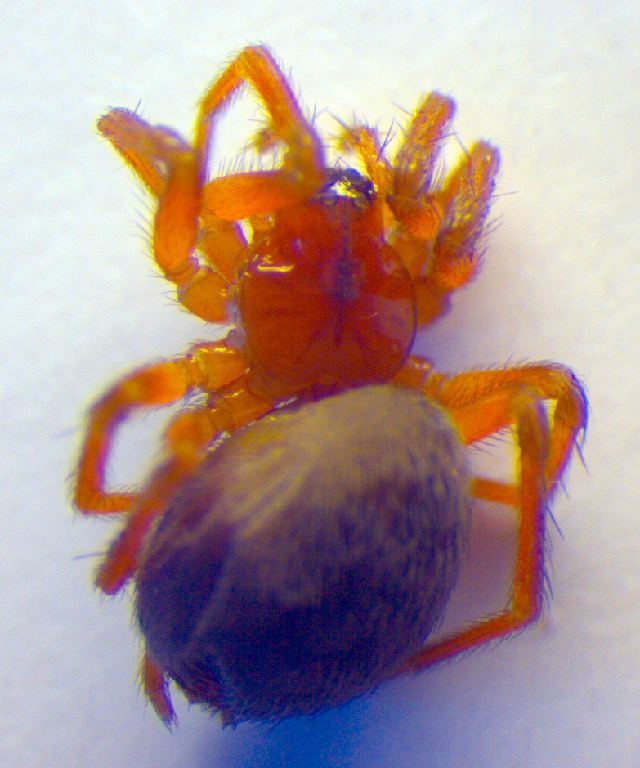Order Araneae Rank Species | ||
 | ||
Similar Hahnia, Drassyllus lutetianus, Clubiona reclusa, Pachygnatha clercki, Clubiona lutescens | ||
Anitistea elegans, the marsh combtail, is a species of dwarf sheet web spider in the family Hahniidae which has a Palearctic distribution.
Contents
Description
Antistea elegans are small spiders the males have a body length of 2.3-2.6mm, the females 2.5-4.3mm. Their most obvious feature is the arrangement of their spinners in a transverse row. The prosoma is yellow-brown to reddish yellow, with dark spots while the opisthosoma is dark grey-brown with brighter patches.
Biology
Antistea elegans constructs small sheet webs over depressions in wetland soil, normally underneath plants. The adults have been found mainly in late summer and autumn, although females have been recorded throughout the year.
Habitat
In Great Britain Antistea elegans has been recorded from fens, marshes, upland blanket bogs, lowland raised bogs, seeps and woodland pool-sides. Specimens have been recorded from wet Sphagnum in Snowdonia National Park at 470m. It has been recorded from similar wetland habitats in Germany.
Distribution
Antistea elegans has a Palearctic distribution. It is widespread in Great Britain and Europe as farwest as Ireland, south to Tunisia and east to Japan.
